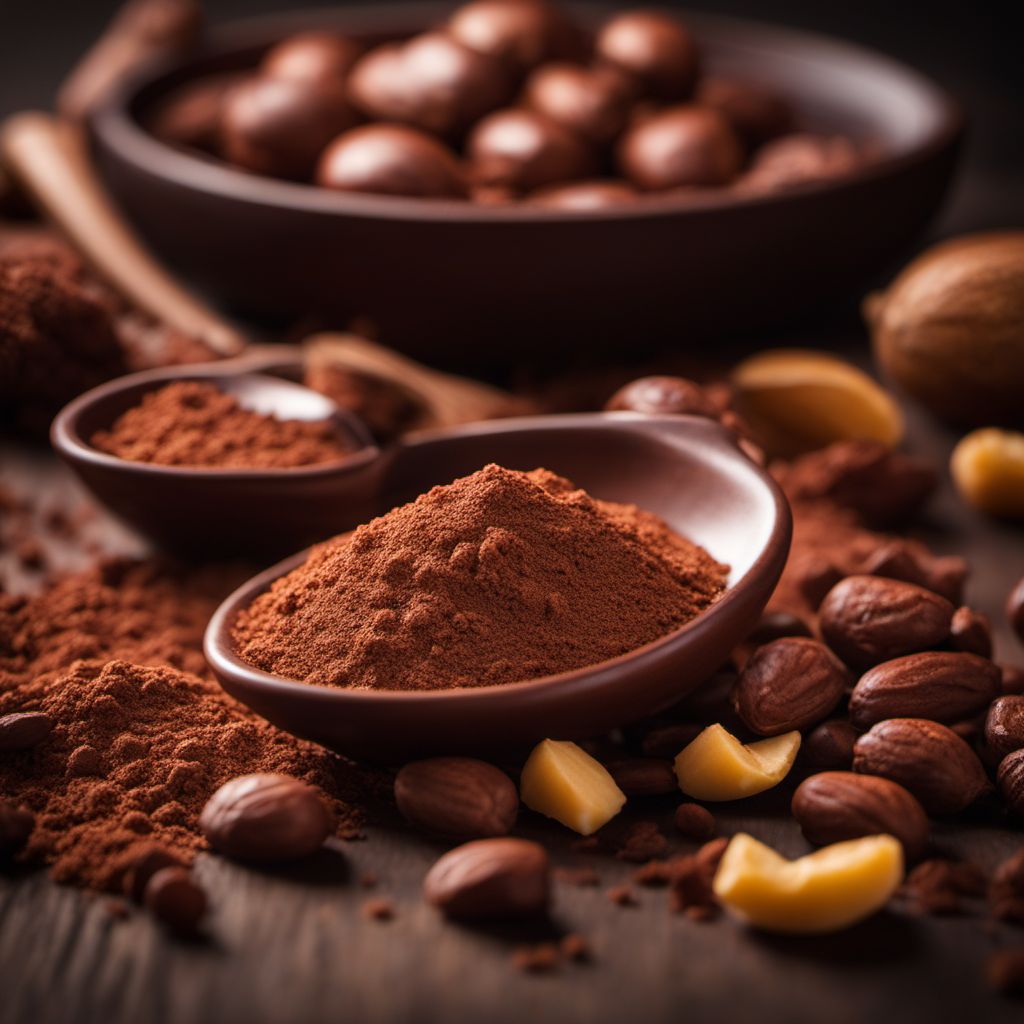
Ingredient
Cocoa beverages
The Decadent Indulgence
Cocoa beverages are made from cocoa powder, which is derived from the beans of the cacao tree. The powder is mixed with milk or water and sweetened to create a smooth and creamy drink. Cocoa beverages have a rich, chocolatey taste with varying levels of sweetness depending on the recipe. They can be enjoyed plain or enhanced with flavors such as cinnamon, vanilla, or peppermint. Cocoa beverages are often topped with whipped cream, marshmallows, or a sprinkle of cocoa powder for added indulgence.
Origins and history
Cocoa beans have a long history and were first cultivated by ancient civilizations in Mesoamerica, including the Mayans and Aztecs. The beans were highly valued and used to make a bitter beverage called xocoatl, which was reserved for royalty and special occasions. With the arrival of Europeans in the Americas, cocoa beans were introduced to the rest of the world and became popular as a luxury item. Today, cocoa beverages are enjoyed in various forms and are a staple during the winter months and festive holidays.
Nutritional information
Cocoa beverages are a good source of antioxidants and contain minerals such as iron, magnesium, and zinc. They also provide a small amount of dietary fiber. The nutritional content can vary depending on the recipe and additional ingredients used. A typical serving of cocoa beverage made with milk contains approximately 150-200 calories, 15-20 grams of carbohydrates, and 8-10 grams of fat.
Allergens
Cocoa beverages may contain allergens such as milk or soy, depending on the recipe and additional ingredients used. It is important to check the label or inquire about the ingredients if you have known allergies or dietary restrictions.
How to select
When selecting cocoa powder for making beverages, look for high-quality brands that use pure cocoa without any additives or artificial flavors. Opt for unsweetened cocoa powder if you prefer to control the sweetness level yourself. Additionally, consider the desired richness and intensity of flavor, as different cocoa powders can vary in taste. It is also important to store cocoa powder in a cool, dry place to maintain its freshness and prevent clumping.
Storage recommendations
To maintain the quality of cocoa powder, store it in an airtight container in a cool, dark place. Avoid exposure to moisture, heat, or direct sunlight, as these can affect the flavor and texture. Once prepared into a beverage, cocoa drinks should be consumed immediately for the best taste and texture. Leftover cocoa can be refrigerated for a day or two, but it may separate and require stirring before serving.
How to produce
Cocoa beans are primarily grown in tropical regions such as West Africa, South America, and Southeast Asia. The trees require a warm and humid climate to thrive. Growing cocoa beans on a small scale can be challenging, as it requires specific conditions and expertise. However, cocoa trees can be grown as ornamental plants in certain regions with suitable climates.
Preparation tips
To prepare a cocoa beverage, start by heating milk or water in a saucepan until hot but not boiling. In a separate bowl, mix cocoa powder with a small amount of hot liquid to create a smooth paste. Gradually whisk in the remaining liquid, along with any desired sweeteners or flavorings. Continue to heat the mixture until it reaches the desired temperature, stirring occasionally. Serve the cocoa beverage hot and garnish with whipped cream, marshmallows, or a sprinkle of cocoa powder if desired.
Culinary uses
Cocoa beverages are commonly enjoyed on their own as a comforting and indulgent drink. They are also a popular base for other desserts and treats, such as chocolate cakes, brownies, and ice creams. Additionally, cocoa powder can be used as a flavoring agent in savory dishes, such as chili or mole sauce.
Availability
Cocoa beans are primarily cultivated in West Africa, particularly in countries such as Ivory Coast, Ghana, and Nigeria. They are also grown in other regions with suitable climates, including South America (Brazil, Ecuador) and Southeast Asia (Indonesia, Malaysia). Cocoa beverages are widely available and enjoyed worldwide.

